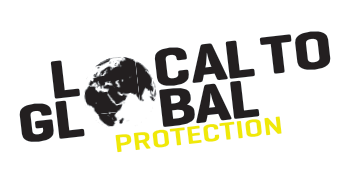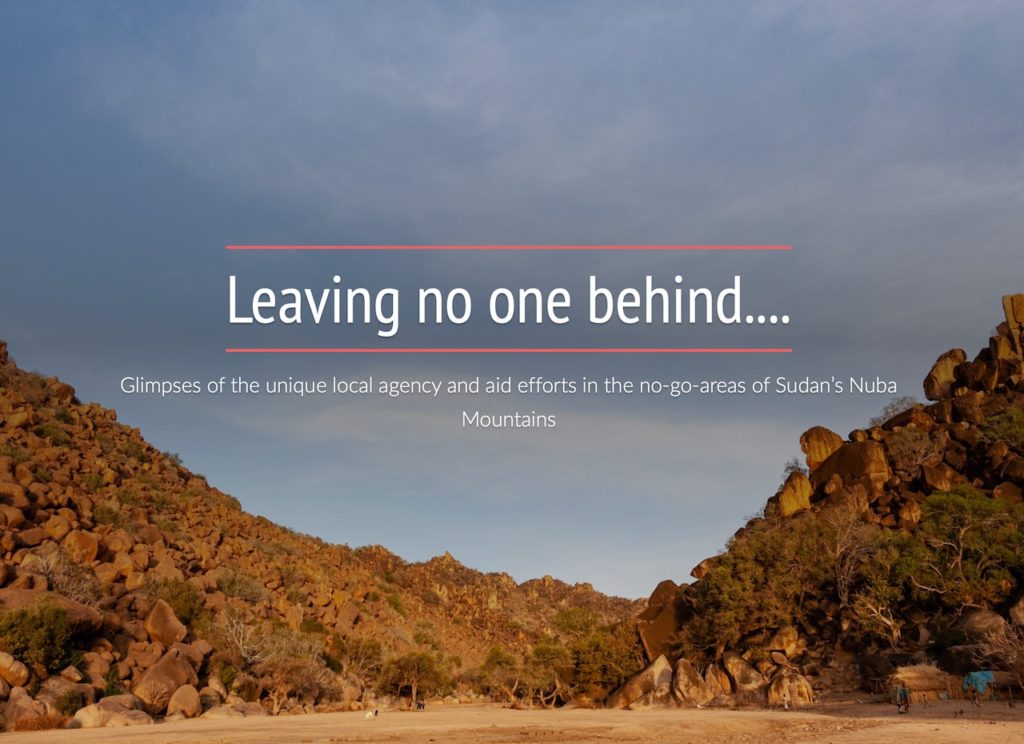We are not animals. We don’t just need food and water to live. We like to make ourselves look beautiful and dance even when we are hungry
Community Member, Moro, Sudan
Sudan
Sudan
Fighting bombs with Perfume
A short video about women-led protection in Sudan from September 2014.
Research
Nils Carstensen and Lodia Sebit
2023
“Every village & town we passed thru people would come out with their kerkade (hibiscus) juice and cold water for the ‘Khartoum travellers’. Humbling experience cause they don’t have much but were offering plenty. Why would I leave this?” – Tweet, 24 April 2023, @dalliasd
The chaos and destruction of the recent conflict in Sudan has been met by a wave of efforts by ‘ordinary’ Sudanese people to help themselves and those around them. At the same time, traditional humanitarian aid has struggled to mount a response to the crisis.
This recent piece, published by the Humanitarian Practice Network, explores the glimpses of mutual aid we can see through media reporting and social media emerging from Sudan.
Nils Carstensen and Lodia Sebit
2023
“Every village & town we passed thru people would come out with their kerkade (hibiscus) juice and cold water for the ‘Khartoum travellers’. Humbling experience cause they don’t have much but were offering plenty. Why would I leave this?” – Tweet, 24 April 2023, @dalliasd
The chaos and destruction of the recent conflict in Sudan has been met by a wave of efforts by ‘ordinary’ Sudanese people to help themselves and those around them. At the same time, traditional humanitarian aid has struggled to mount a response to the crisis.
This recent piece, published by the Humanitarian Practice Network, explores the glimpses of mutual aid we can see through media reporting and social media emerging from Sudan.
Experiences with local and global responses to the protection crises
Women-led protection in South Kordofan, Sudan
Justin Corbett
2010-2015
Abdalla K, Laila, Hawa M, Mary I, Musa M and Kocho C.
2014
A detailed exploration of community-based protection activities of local NGOs and in particular the local Women’s Association.
Protection in Sudan’s Nuba Mountains: Local achievements, international failures
Learning from the Nuba: Civilian resilience and self-protection during conflict in South Kordofan (Sudan)
Justin Corbett
2012
Justin Corbett
2011
Early findings from a local civil society initiative with self-protection in South Kordofan and the Nuba Moutains.
The full study presents the findings from a field-study in the Nuba Mountains of South Kordofan State, Sudan. Its intention was to learn from the experiences, perceptions and insights of local communities who lived through the 1986-2005 war and subsequent Comprehensive Peace Agreement of 2005 to 2011.
In June 2011, while the lead researcher was in Nuba cross-checking core study findings and possible further practical applications, the current ongoing conflict started and quickly spread across much of the original research area. This rapid and brutal return to war provided a tragic opportunity to extend the study, one that clearly required a more hands-on, action-oriented approach to learning by doing.
Based on extensive local research, the study elaborates on a number of issues such as:
- The holistic nature and local understanding of protection
- The role of self protection – opportunities and limitations
- vulnerability of women v. their roles in providing protection
- Perceptions of armed forces and groups
- International protection – weaknesses and potential to improve
- Protecting the peace
- Protection during “real time” conflict – august 2011
Experiences with local and global responses to the protection crises
Justin Corbett
2010-2015
This paper reflects on the range of experiences of conflict-affected communities and international agencies responding to four years of devastating civil war in the South Kordofan and Southern Blue Nile regions of Sudan.
Women-led protection in South Kordofan, Sudan
Abdalla K, Laila, Hawa M, Mary I, Musa M and Kocho C.
2014
A detailed exploration of community-based protection activities of local NGOs and in particular the local Women’s Association.
Protection in Sudan’s Nuba Mountains: Local achievements, international failures
Justin Corbett
2012
Early findings from a local civil society initiative with self-protection in South Kordofan and the Nuba Moutains.
Learning from the Nuba: Civilian resilience and self-protection during conflict in South Kordofan (Sudan)
Justin Corbett
2011
The full study presents the findings from a field-study in the Nuba Mountains of South Kordofan State, Sudan. Its intention was to learn from the experiences, perceptions and insights of local communities who lived through the 1986-2005 war and subsequent Comprehensive Peace Agreement of 2005 to 2011.
In June 2011, while the lead researcher was in Nuba cross-checking core study findings and possible further practical applications, the current ongoing conflict started and quickly spread across much of the original research area. This rapid and brutal return to war provided a tragic opportunity to extend the study, one that clearly required a more hands-on, action-oriented approach to learning by doing.
Based on extensive local research, the study elaborates on a number of issues such as:
- The holistic nature and local understanding of protection
- The role of self protection – opportunities and limitations
- vulnerability of women v. their roles in providing protection
- Perceptions of armed forces and groups
- International protection – weaknesses and potential to improve
- Protecting the peace
- Protection during “real time” conflict – august 2011

